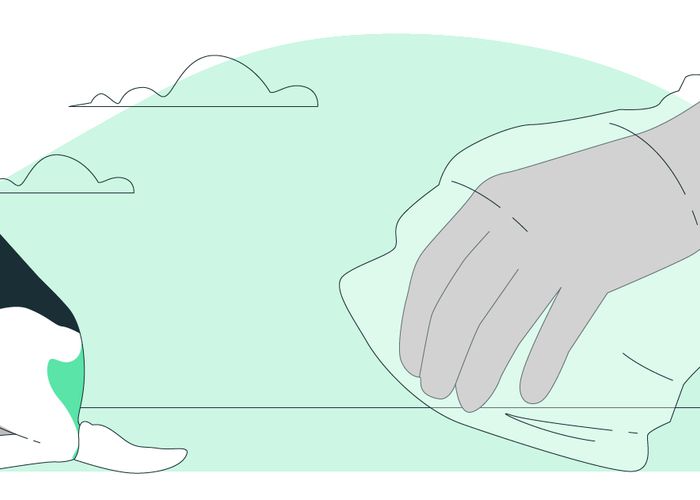

IRIS Staging of Chronic Kidney Disease in Pets for Improved Outcomes
Chronic kidney disease (CKD) is common—impacting 1 in 3 cats and 1 in 10 dogs according to IDEXX data—and a leading cause of death in senior pets. The International Renal Interest Society (IRIS) developed guidelines for both staging and treatment of CKD in pets in order to help veterinarians better manage these complex cases. Whether you use the guidelines frequently, or consider yourself a novice, this primer can help you understand their value in providing better management for renal patients.
Diagnosing Chronic Kidney Disease in Pets
A diagnosis of CKD must be made before staging can occur. Ruling out non-renal causes, and establishing the diagnosis in a hydrated, stable patient are imperative. Factors such as patient history, physical exam findings, laboratory results, imaging, and in some cases histopath results can all play a role in staging CKD in pets. Abnormalities leading to CKD include a decline in functioning renal tissue leading to reduced glomerular filtration rate (GFR), loss of tubular function, and/or structural changes in the kidney. Diagnostic indicators include the following:
Stage patients for chronic kidney disease 8x faster on average. See how.
-
Clinical signs: As CKD progresses, signs include polyuria, polydipsia, hyposthenuria, weight loss, decreased appetite, lethargy, dehydration, vomiting, and halitosis.
-
Physical examination: Physical exam findings may include poor body condition score, dehydration, pale mucous membranes, uremic ulcers, palpable kidney abnormalities, and retinal hemorrhages or detachment.
-
Creatinine: Progressive increases in serum creatinine levels can indicate CKD.
-
Symmetric dimethylarginine (SDMA): Progressive increases in serum SDMA can indicate CKD. Evidence suggests that persistently elevated SDMA above 14 ug/dl precedes serum creatinine elevations in dogs and cats.
-
Proteinuria: Persistent renal proteinuria indicates indicates impaired glomerular filtration.
-
Urine specific gravity: Abnormally low urine specific gravity is a result of decreased urine concentrating ability.
-
Abnormal kidney imaging: Structural abnormalities of the kidney may be evident on radiographs or ultrasound.
Staging Chronic Kidney Disease in Dogs and Cats
IRIS Staging for CKD for dogs and cats is based on fasting blood creatinine and SDMA concentrations on two occasions in a hydrated, stable patient, and only once non-renal causes have been ruled out. Substaging is then based on measurements of the patient's blood pressure and urine protein:creatinine ratio.
Stage 1:
Some renal abnormalities, such as low urine specific gravity, abnormal kidney palpation, renal proteinuria, and abnormal renal imaging, may be present. Persistently elevated SDMA concentrations above 14 mg/dl can be used to diagnose early CKD.
-
Dogs: Creatinine <1.4 ug/dl (considered normal); SDMA <18 ug/dl (mildly elevated).
-
Cats: Creatinine <1.6 ug/dl (considered normal); SDMA <18 ug/dl (mildly elevated).
Stage 2:
Clinical signs are usually absent or mild.
-
Dogs: Creatinine 1.4–2.8 ug/dl (high end of normal or mildly increased); SDMA 18–35 ug/dl (mildly elevated).
-
Cats: Creatinine 1.6–2.8 ug/dl (high end of normal or mildly increased); SDMA 18–25 ug/dl (mildly elevated).

Stage 3:
Extrarenal signs may vary in extent and severity. If signs are absent, the patient is in early stage three. Marked systemic signs should be classified as late stage three.
-
Dogs: Creatinine 2.9–5.0 ug/dl; SDMA 36–54 ug/dl.
-
Cats: Creatinine 2.9–5.0 ug/dl; SDMA 26–38 ug/dl.
Stage 4:
These pets have an increased risk of systemic clinical signs and a high potential for a uremic crisis.
-
Dogs: Creatinine >5 ug/dl; SDMA >54 ug/dl.
-
Cats: Creatinine >5 ug/dl; SDMA >38 ug/dl.
Substaging Chronic Kidney Disease
Systemic hypertension and proteinuria are the parameters used to substage CKD, since they are common secondary effects of kidney failure. Classifications include:
-
Proteinuria substaging: As renal glomeruli degenerate, protein leaks through enlarged fenestrations, causing proteinuria. Classification is made by a urine protein to creatinine (UPC) ratio:
-
Non-proteinuric: Dogs and cats have a UPC ratio less than 0.2.
-
Borderline proteinuric: Dogs have a UPC ratio between 0.2 and 0.5, and cats have a UPC ratio between 0.2 and 0.4.
-
Proteinuric: Dogs have a UPC ratio above 0.5, and cats have a UPC ratio above 0.4.
-
-
Blood pressure substaging: CKD can lead to hypertension, which can cause significant target organ damage. Classification is based on systemic blood pressure and organ damage risk:
-
Normotensive: Systolic blood pressure is less than 140 mm/Hg, and organ damage risk is minimal.
-
Prehypertensive: Systolic blood pressure is between 140 and 159 mm/Hg, and organ damage risk is low.
-
Hypertensive: Systolic blood pressure is between 160 and 179 mm/Hg, and organ damage risk is moderate.
-
Severe hypertension: Systolic blood pressure is above 180 mm/Hg, and organ damage risk is severe.
-
Treating CKD in Pet Patients
All treatment protocols for CKD patients should be individually tailored, but IRIS' recommendations provide a useful starting point to guide management. CKD patients should receive serial monitoring, and their treatment should be modified according to their treatment response. Recommended treatments are meant to preserve kidney function, to slow CKD progression, and improve the pet's quality of life. Treatment recommendations for each CKD stage include the following:
-
Stage 1: Therapeutic emphasis is on slowing disease progression. Recommendations include preventing dehydration, discontinuing nephrotoxic drugs, identifying and treating pre- and post-renal abnormalities, and addressing systemic hypertension with appropriate medications.
-
Stage 2: Therapeutic emphasis continues to focus on slowing disease progression. Treatments and recommendations include monitoring and management of phosphorus concentrations. Starting a renal therapeutic diet or phosphate binders is indicated when phosphorus concentrations exceed 4.6 mg/dL. For cats with a phosphorus concentration below4.6mg/dL, FGF-23 testing is recommended and may indicate the presence of subclinical hyperphosphatemia potentially warranting earlier therapeutic intervention. Hypokalemic cats should also be treated appropriately.
-
Stage 3: Therapeutic emphasis shifts toward improving life quality. Pets may need enteral or subcutaneous fluids to maintain hydration and anti-nausea medications to improve appetite. Calcitriol therapy should be considered in dogs, and complications from metabolic acidosis or anemia should be addressed.
-
Stage 4: As the pet's condition worsens, quality of life becomes paramount. In addition to previous treatments, a feeding tube may be necessary to provide nutritional support, maintaine hydration, and facilitate medication administration.
CKD is a complex disease, and the IRIS guidelines are a valuable tool for veterinarians who diagnose and treat CKD patients. Accurately staging CKD patients and following the treatment recommendations may help these pets live longer, happier lives.







